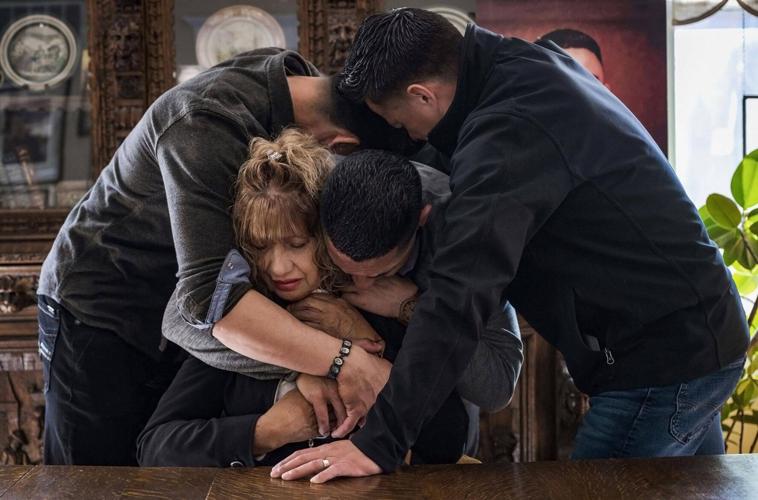
In November 2022, Albuquerque police officers shot and killed Jesus Crosby in the parking lot of the department’s headquarters after he took a step forward while holding nail clippers with the file extended. This incident has sparked ongoing debate over whether the officers’ use of force was justified and in line with department policy.
Early on November 10, five officers approached Crosby, who was 41 years old and experiencing a mental health crisis, to take him into custody for trespassing at a nearby prisoner transport center. Crosby, holding what officers believed to be a knife, refused to surrender and shouted obscenities. In response, two officers shot him, while two others used Tasers. Crosby’s death was one of 18 shootings by Albuquerque Police Department (APD) officers in 2022, which resulted in 10 fatalities.
The APD’s Internal Affairs Force Division and department leadership concluded that the officers’ actions were consistent with policy, which mandates that force be reasonable, necessary, and minimal. However, this decision was not without controversy.
Disagreement arose from various parties involved in the review process. Both the detective who conducted the internal affairs investigation and his supervisor, along with two external agencies that review police use of force, believed the shooting violated department policy. Critics argue that Crosby’s case raises questions about the effectiveness of ongoing police reforms, particularly in cases involving individuals experiencing mental health crises. The department has been under a federal settlement agreement since 2014, following a Department of Justice investigation that found a pattern of excessive force by APD officers.
Mark Fine, the attorney representing Crosby’s family in a wrongful death lawsuit against the city, sees this incident as a critical test of whether the department has truly reformed. He expressed outrage that some within the department viewed the shooting as justified, questioning the integrity of the accountability process.
In a letter to federal Judge James Browning, who oversees the police reform case, the McClendon amici group—a group of advocates involved in the settlement agreement—highlighted the shooting as evidence of APD’s “ongoing pattern and practice” of unlawfully using deadly force against individuals with mental illness or substance abuse issues.
The letter criticized the officers for failing to de-escalate the situation, despite knowing Crosby from previous arrests. It also challenged the city’s conclusion that the officers’ actions were justified, raising broader concerns about the effectiveness of the department’s reform efforts.
The internal review found that officers Alex Couch and Chance Gore did not use de-escalation techniques or plan for less-lethal options. Both officers, who joined APD in 2020 and remain with the Valley Area Command, were disciplined, though the specifics were not disclosed. Additionally, two supervisors were faulted for failing to properly manage the situation.
John D’Amato, an attorney for the police union, defended the officers, arguing that Gore’s use of deadly force was justified based on his perception of the threat in that moment. He declined further comment, citing the ongoing litigation.
Documents obtained by the Journal through a public records request revealed conflicting findings within the internal investigation. The detective who led the internal affairs investigation determined that the use of force was “unnecessary and out of policy,” citing numerous tactical and procedural shortcomings. His supervisor agreed, noting that the officers failed to use distance, cover, or other de-escalation methods before resorting to deadly force.
However, a deputy commander reviewing the case disagreed, arguing that while the officers’ tactics were flawed, their use of force was not out of policy when considering the “totality of circumstances.”
Leadership within the Internal Affairs Force Division ultimately sided with the deputy commander, concluding that the use of force was within policy. Following the shooting, the department revised its policies to require a supervisor to respond when an individual arms themselves and clarified guidelines on the use of less-lethal force.
Despite these findings, external groups have expressed disagreement. Darryl Neier, the administrator for the External Force Investigation Team, documented his disagreement with the internal findings in a letter to several federal and city officials. He argued that Crosby, who was experiencing a mental health or narcotic crisis, did not pose a significant threat when he was shot.
At a Force Review Board meeting in March, APD and city officials voted to uphold the finding that the use of force was consistent with policy, though one member dissented, arguing that the force was not proportional.
Diane McDermott, executive director of the Civilian Police Oversight Agency, voiced her concerns during the meeting, questioning how the force could be considered within policy given the numerous issues identified in the investigation.
In response, APD Commander Scott Norris acknowledged the failures earlier in the encounter but maintained that these did not automatically make the use of force unjustified. He emphasized that the department was addressing the identified shortcomings appropriately.
Crosby, who was diagnosed with schizophrenia, had frequent interactions with the APD’s Crisis Intervention Team. In the two months before his death, he had been arrested three times for trespassing at the prisoner transport center, once stating that he preferred arrest to spending the night at a shelter.
Crosby’s family has filed a lawsuit against the city, alleging that the officers’ actions violated his rights and led to his wrongful death. Fine, the family’s attorney, expressed disbelief that the department could find the shooting to be within policy, calling the claim “preposterous” and questioning the department’s commitment to meaningful reform.
Leave a Reply